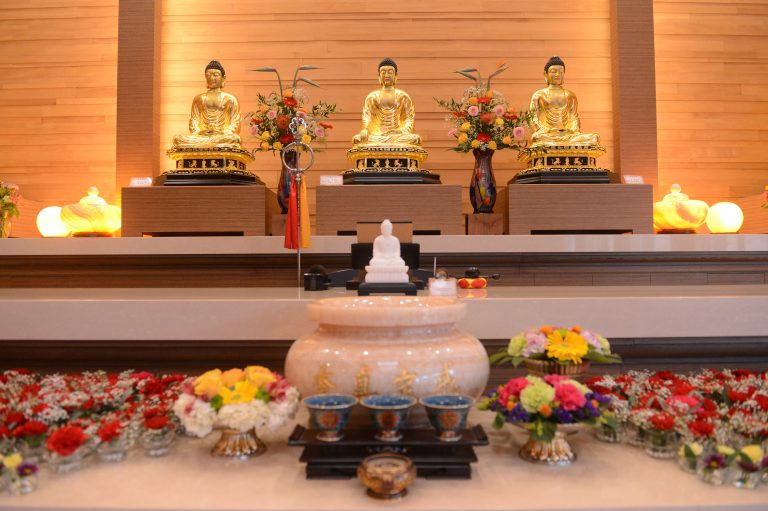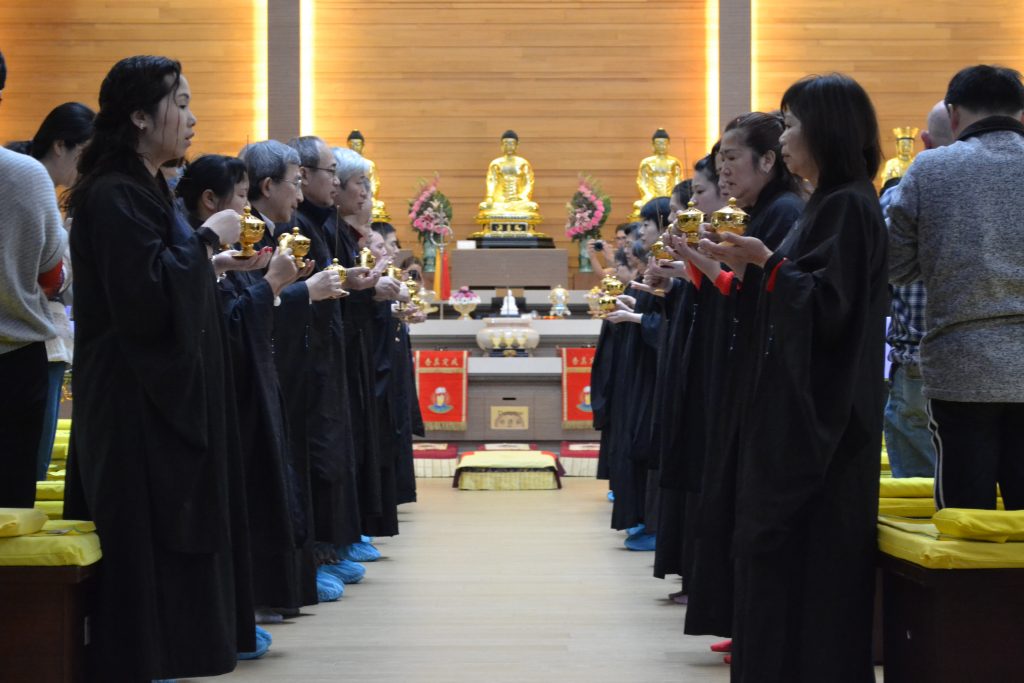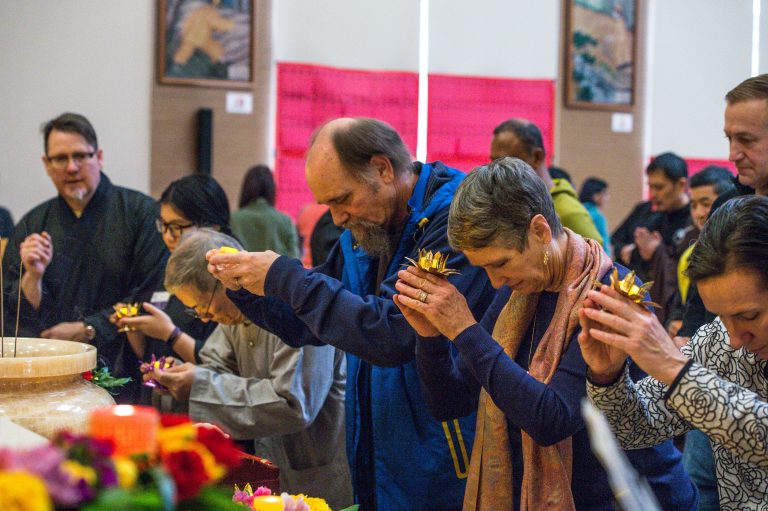
Ceremonies are held once a month on Sunday. Each ceremony is based on a particular sutra, but they all have a standard format. Instructions will be given in both Chinese and English. The ceremonies consist of many elements, newcomers may not be familiar with the rituals. Therefore, a general description is provided here.

The ceremony begins by inviting the abbess into the Chan Hall to conduct the ceremony.The assembly joins their palms while facing the center aisle to welcome the Celebrant Master.This is done to express deep reverence to the Three Jewels (The Buddha, the Dharma and the Sangha).
Offerings are made as part of our practice of giving. We usually make offerings of flowers, lamps (candles), and incense as a means of reducing greed and developing compassion. Flowers are symbolic of virtue. The lamp symbolizes our intrinsic wisdom. Incense symbolizes spiritual cleansing or purifying and the fragrance of pure moral conduct.

Dharma instruments are played prior to and during the chanting portion of the service. They are used primarily to help establish the rhythm of the chants. The liturgy book is written in Chinese but also has the Pinyin words (Chinese words written in the Roman alphabet) as well as the English translation. By chanting the sutra together we purify our thoughts, speech, and behavior. We then sincerely dedicate our merits for the benefit of all beings and for peace and harmony in the world.

Half-bows and prostrations will be performed during the ceremony. To prostrate is not to worship a statue or a person. The purpose of these acts is to tamp down our ego and arrogance and to honor the teachings and example of the Buddha. Half-bows can be done as an alternative for people who are unable to perform prostrations.
To provide a better understanding of the particular sutra and ceremony, the abbess will give a Dharma talk in both English and Chinese.
A ceremony is an opportunity to cultivate our Buddhist practice and to dedicate merits to all sentient beings. Reverence and gratitude for the wisdom and compassion of the Buddha are integral aspects of Buddhist etiquette.
No Prerequisites.